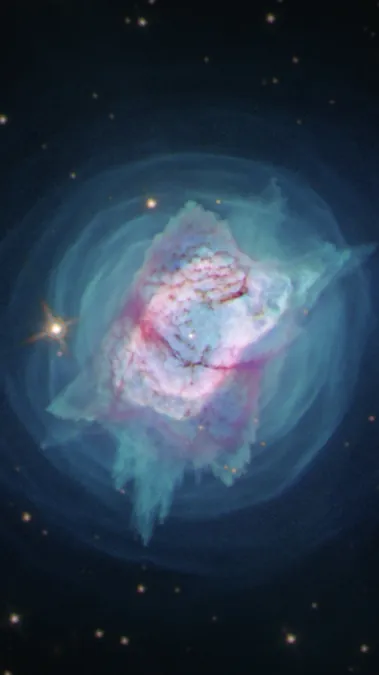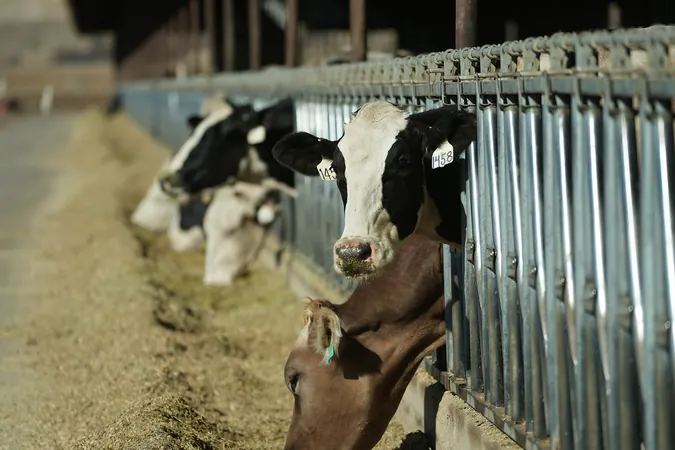
Unveiling the Universe: 5 Breathtaking Nebula Images Captured by NASA's Hubble Space Telescope
2025-04-05
Author: Yu
NASA's Hubble Space Telescope and the Nebulae
NASA's Hubble Space Telescope continues to provide some of the most stunning images of the cosmos, revealing the vibrant colors and intricate structures of nebulae. Here are five mesmerizing images that showcase the beauty and complexity of these stellar nurseries.
1. Carina Nebula
Behold the dazzling new image of the Carina Nebula, a breathtaking region where new stars are born. This small section of the nebula, also known as "Keyhole Nebula," is often highlighted due to its rich assortment of massive stars and gas clouds. The Carina Nebula is located approximately 7,500 light-years away from Earth and is one of Hubble's most frequently imaged objects, consistently amazing astronomers and stargazers alike.
2. Hourglass Nebula
Hubble has provided a stunning insight into the unique shape of MyCn18, commonly known as the Hourglass Nebula. This image unveils the nebula's spectacular hourglass structure with intricate etching patterns on its walls, revealing the stellar processes at play. Situated about 8,500 light-years away, it offers an unparalleled look at how star-forming regions evolve.
3. Orion Nebula
The Orion Nebula, often dubbed the "jewel of the night sky," is celebrated for its vibrant colors and dense cloud of gas and dust where new stars are forming. This captivating Hubble image represents the sharpest view of the Orion Nebula ever captured, allowing astronomers to study the intricate details within this 1,344 light-years distant spectacle. The nebula serves as a clear illustration of how stars and planets come to existence, making it a focal point in astronomical research.
4. NGC 6302: The Butterfly Nebula
Known affectionately as the Butterfly Nebula due to its unique shape, NGC 6302 lies between 2,500 and 3,800 light-years away in the constellation Scorpius. The image reveals a spectacular outflow of gas, resembling butterfly wings, which expands into space as the central star sheds its outer layers. This nebula is a remarkable example of a planetary nebula, presenting an important stage in the life cycle of a star.
Conclusion
These stunning images not only reflect the artistry of nature in our universe but also underscore Hubble's vital role in advancing our understanding of cosmic phenomena. As technology evolves and telescopes become more advanced, who knows what incredible sights await us in the endless depths of space? Stay tuned for more breathtaking discoveries!


 Brasil (PT)
Brasil (PT)
 Canada (EN)
Canada (EN)
 Chile (ES)
Chile (ES)
 Česko (CS)
Česko (CS)
 대한민국 (KO)
대한민국 (KO)
 España (ES)
España (ES)
 France (FR)
France (FR)
 Hong Kong (EN)
Hong Kong (EN)
 Italia (IT)
Italia (IT)
 日本 (JA)
日本 (JA)
 Magyarország (HU)
Magyarország (HU)
 Norge (NO)
Norge (NO)
 Polska (PL)
Polska (PL)
 Schweiz (DE)
Schweiz (DE)
 Singapore (EN)
Singapore (EN)
 Sverige (SV)
Sverige (SV)
 Suomi (FI)
Suomi (FI)
 Türkiye (TR)
Türkiye (TR)
 الإمارات العربية المتحدة (AR)
الإمارات العربية المتحدة (AR)